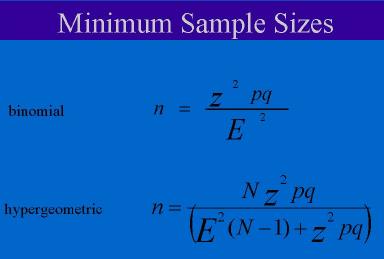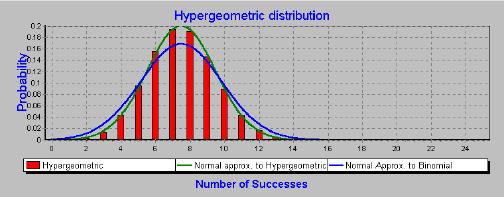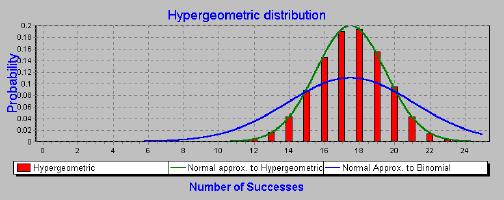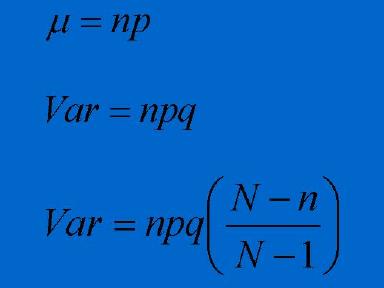How do we select a sample size when sampling a small population?
When dealing with large populations, the sample size is determined using the normal approximation to the binomial distribution. This approximation is very accurate when the population is large, and the sample size is small. However, if you were to sample a population of 200 individuals, then for a given accuracy, you would require a far smaller sample than that calculated using the normal approximation to the binomial. To determine the sample size for small populations, we use the normal approximation to the hypergeometric distribution. The sample size formulas for large (binomial) and small (hypergeometric) populations are shown below. |
Where
|
How different are the sample sizes from small population vs large populations?
If we are carrying out an opinion survey from a large population, and we want the confidence intervals for our sample proportions to have a 95% confidence level with an error of plus or minus 0.03%, then the minimum sample size required is 1,068 individuals. If we were to sample a small population, the sample size would be much smaller:| Population Size | Required Sample Size |
| 5000 | 880 |
| 1000 | 517 |
| 500 | 341 |
| 300 | 235 |
Download an Excel worksheet that calculates the minimum sample size needed for a survey
This file will be in a zipped format. Download nowConfidence intervals for samples from small populations
Confidence intervals for proportions are based on the shape of the standard error of the proportion. Most analyses of survey data calculate confidence intervals based on the standard error of the proportion following the normal approximation to the binomial. For small populations this confidence interval will be inaccurate - it will be too wide. A more accurate procedure is to calculate the confidence intervals based on the normal approximation to the hypergeometric. The following two charts demonstrate the superior accuracy of this method when calculating confidence intervals using the normal curve. The following chart the population size is 100, and the sample size is 30. We can see that the normal approximation to the hypergeometric gives a slightly better fit than the normal approximation to the binomial. The normal approximation to the binomial is too wide.

